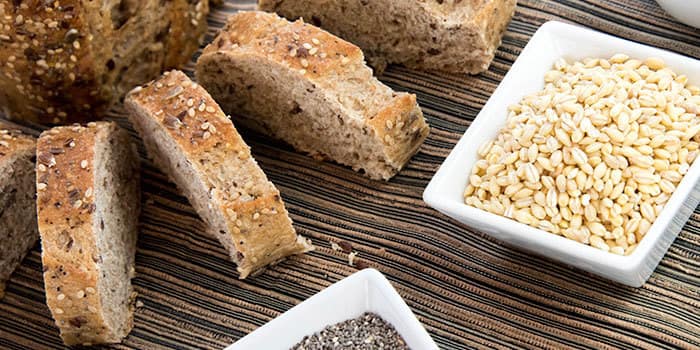The Role of Metabolism, Diet, and Exercise in Weight Loss
The Role of Metabolism, Diet, and Exercise in Weight Loss
Starting a weight loss journey has always been quite a tricky path to take. Some venture into it and see results, but unfortunately, fall off the track after some time. Others are able to sustain it successfully and make it part of their lifestyle – eventually maintaining it. Certainly, you would like to be the one to get to his or her target weight and keep it that way for good. But how do you get to that place where you are able to shed those pounds off for real? What is the real score here when it comes to weight loss? There are three significant factors that directly affect a healthy weight loss that you need to be aware of. Apparently, they have to do with the interaction of your metabolism, diet regimen, and total physical activity.
Metabolism
So what exactly is the role of metabolism in your weight loss journey? Metabolism is actually a major key factor in weight loss. It is the process when your body converts what you eat and drink into energy. Each individual’s metabolism may differ. Some may have “high” metabolism, and others may have “low” metabolism. Think of your metabolism as a machine or an engine. Those with “high” metabolism have these machines or engines constantly running. It runs while the person is active, but it may also still run while the person is inactive, like an idle engine running. As long as the engine runs, the body keeps on burning calories. Being in an inactive state may lower the burning rate, but it is still burning. For people who have “low” metabolism, imagine that the engine is also running but at a slower and less active pace. So in turn, that would also result in lesser calories burned; and when in an inactive state, the calories burned can also be so much lesser or even near to none.
Luckily, metabolism rates have many factors affecting it and it can be modified by physical activity. Here are some of the factors that affect metabolism:
-
Genetics
Each individual’s genetic makeup is the foundation of one’s physical attributes. Metabolism is one of the things that is genetically inherited. Some people are blessed with a genetic makeup that consists of a high metabolism rate, thus making them burn calories almost effortlessly. It seems that these individuals can eat whatever they want, anytime they want, and they seem to just not gain weight. On the other hand, there are the individuals who seem to watch what they eat but seem to gain weight just after eating that one slice of that sinfully rich cake. These are the people who aren’t so lucky with the metabolism part of their genetic makeup. Most likely, they have inherited a slow metabolic rate. Genetics are something each individual is born with and there isn’t a choice when it comes to this. But no worries because what you can do is to find out what you have in your genetic makeup and find ways to work around it or make it work for you.
-
Age
Another factor that affects your metabolism rate is actually age. While genetics can give you high or low metabolism, increasing age does slow it down. So those with high metabolism will have somewhat slower metabolic rates as they age, and those with low metabolism will also experience the same. Now, you might be asking yourself, when does metabolism start to slow down? When a person hits his or her thirties, the metabolic rate starts to slow down. That is why people who are in this age group or older find it harder to lose weight as compared to when they were younger – even if they try utilizing the same method as they did in their twenties. Can this be rectified? With some effort, yes it can. After all, age is just a number and how much effort you expend to somewhat reverse the process can result in a big change.
-
Activity Level
You can consider this as the tie breaking factor when it comes to metabolic rate. Activity level is a highly significant factor when it comes to speeding up or lowering down metabolic rate no matter your genetic make-up or age. Basically, higher activity level is followed by increased metabolic rate. So the more the person moves, the more efficient the “engine” is running – thus resulting in more effective burning. Activity level can mean daily movements and physical activities, or the incorporation of workouts and exercise routines into your lifestyle. Some people, even when in a resting state like sitting, may tend to fidget or keep on moving. Because of this, you will notice that these are leaner individuals compared to those who are quite stationary once in a state of rest. This is because those little fidgety movements contribute to the “engine” running – prompting it to keep on burning even in a state of inactivity. Needless to say, you need to make an effort to engage in constant physical activity if you want to lose some pounds. Even when sitting down, you can do some upper body movements or take breaks in between and do some little exercises or movements.

Diet
This is something you know for sure: your weight loss journey can be accomplished effectively if you eat right. The other factors affecting weight loss can only do so much, but if you don’t eat right, it will make the journey quite rocky and challenging. However, it must also be noted that each individual’s genetic makeup and lifestyle can get into a certain eating style and sustain it, while others may not. So it is important that you know what kinds of food work for you and your lifestyle. Here are some diet styles that you might want to explore:
-
Calorie Deficit Diet
The calorie deficit diet is an eating style where you cut down your daily calorie intake. While it may differ specifically for each person, but a good rule of thumb for this eating style is cutting down 500 calories in your daily intake. You can add more calories to cut down, and 500 calories is just an average for healthy weight loss. The number of calories to cut down from your daily intake will also depend on your current weight, lifestyle, and gender. Men would usually need 300 calories more than women in the calories they need for the day. So for a basic starting point, women could maintain about 1,200 to about 1,500 daily, and men about 1,500 to 1,800 daily calorie intake. Some may have programs that get them to have only 800 calories for their daily intake. If this has been prescribed by your doctor, then it is safe to follow. However, if it hasn’t been prescribed by your doctor, it is best to stick to the basic 1,200 calories, at the very least, for women, and 1,500 calories, for men. If you go lower than these numbers though, it can prove to be dangerous for your health and may cause problems on your health so you have to be careful. If you are interested to try a calorie deficit diet, consult your doctor or nutritionist for proper guidance.
-
Low Carb Diet
The low carb diet is fairly simple – you avoid eating carbohydrates and limit your daily carbohydrate intake to just about 20 to 50 grams. If you wish to lose weight, 20 grams or less should be your daily carb allotment. If you wish to just maintain your weight, you can go up to 50 grams of carb intake daily. The science behind the low carb diet is that our body recognizes two food types as a source of energy: carbohydrates, and fats/oils. When you eat carbohydrates, your body burns carbohydrates and when it runs out, you get hungry because it is demanding for more. So your body is just burning what is going in. However, if you limit your carbohydrate intake but increase your healthy fat and oils intake, when what you have ingested has been burned, then you won’t be feeling hungry because your body won’t be demanding for it. Why? Because it will turn to your fat storage and burn those for energy, recognizing that it is the same substance that it has been burning when you ate. This way you don’t run out of energy, but at the same time you are burning excess fats. Talk about a win-win situation.
-
Vegetarian Diet
The vegetarian diet is also a good option especially for people who prefer a plant-based eating style. This kind of diet is known to be one of the most effective in maintaining health. It can be lighter on the stomach and easier for the digestive system too. The vegetarian diet, although plant-based, does have its substitutes for nutrients commonly found in meat and animal-based diet. Many plant-based foods have protein, calcium, and the other nutrients that you might think can only be found in animal-based products. A vegetarian diet incorporates vegetables, fruits, grains, nuts, legumes, healthy fats and oils. A typical breakfast can be overnight oats using rolled oats, almond milk, chia seeds, fruits, and honey. Some may even add cacao nibs. Organic coffee and other plant-based beverages are also very much a part of this diet. Some vegetarian diets that are not that strict may also allow eggs and fish, although some are really particular and would only prefer plant-based food for their intake.

Exercise
-
Low Intensity
Low intensity workout routines are those that don’t really demand for an all-out energy exercise session from you. These types of exercises can be incorporated into your daily schedule such as walking, jogging, running, light strength training, swimming a few laps, or doing some yoga and pilates. These exercises are important to keep your metabolism running and maintained at a certain rate. A minimum of 30 minutes daily or an hour every other day of doing either of these exercises can help maintain a healthy weight loss for you. Walking is the simplest form of exercise that you can incorporate in your daily activity schedule. Walking more around the office, using the stairs instead of the elevator or walking to the nearby convenience store rather than taking a ride can actually contribute to your activity level.
-
High Intensity
High intensity workout routines usually demand shorter exercise time durations but will need you to spend all your energy on it. It is quick but dead tiring. This kind of workout, though, is deemed to be very effective in burning calories and giving your metabolism a kick start. High intensity workout sessions can last only up to 10 or 30 minutes and your metabolism will be burning calories like crazy. High intensity workouts, however, should be done under the supervision of a fitness trainer if you are new to it and still aren’t familiar with the reps and sets. However, once you already know the proper execution of the exercises, you can do it on your own.
-
High and Low Intensity Intervals
Combining high and low intensity workout routines is also believed to be quite effective in weight loss. It can play around with your body’s calorie burning pattern, and can jumpstart some fat burning especially if you’ve hit a weight loss plateau. This workout routine usually combines the two, having some high intensity exercises inserted in the middle of a low intensity routine, or vice versa. Most people who go into this kind of exercise routine are those who are already used to high and low intensity workouts. It is a variation to their usual exercise routines in the past and their metabolism may need a bit of a push. However, this kind of exercise routine is not limited to those who are already used to working out. If you are a beginner and would like to try this out, you can consult a fitness trainer and they can even draw up a fitness or workout program for you with this design. If you are determined and committed, nothing seems impossible.
The Verdict
For a successful weight loss journey, all three factors – metabolism, diet, and exercise, must be taken into account. For those who are just starting the weight loss journey, it is easy because the determination and commitment is strong at the beginning, thus results will show up soon and may even seem effortless. However, as time goes by, that same determination and commitment you had may seem to waver and consistency in eating styles and exercise or activity levels may change. This can affect the journey and may end up with you starting back at point zero. Diet and exercise for weight loss is not just a trend or a fad. It is more than that. It is a lifestyle change. Diet and exercise can boost your metabolism and cause you to lose weight, but the key to success is actually in the maintaining of the results you have already achieved. So stick with a diet and exercise routine that you are most comfortable enough with to make it into a sustainable, healthy lifestyle. It is only in this way that you can be guaranteed of maintaining that new, healthier you.









